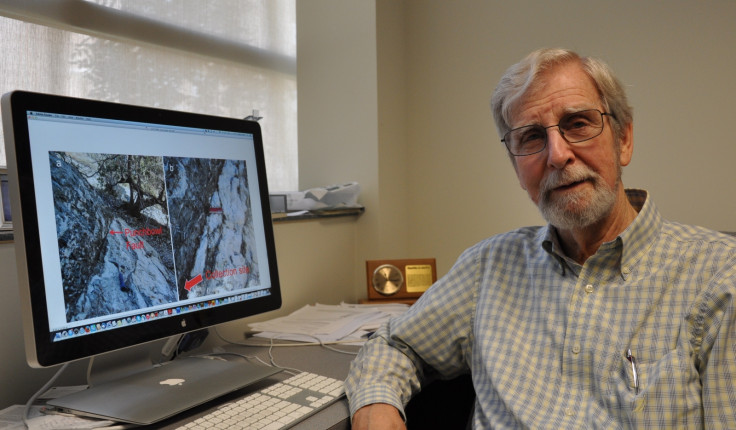Earthquakes: Tiny crystals help giant tectonic plates to slide over

Deep and shallow earthquakes operate on the same sliding mechanism caused by tiny crystals, irrespective of initial conditions that set them off, according to a new study.
A research team led by University of California, Riverside geologists reports that both shallow earthquakes and deep ones involve phase transformations of rocks that produce tiny crystals on which the sliding occurs.
"Other researchers have suggested that fluids are present in the fault zones or generated there," earthquake expert Harry W Green II, a distinguished professor of the Graduate Division in UC Riverside's Department of Earth Sciences, who led the research project, said.
"Our study shows fluids are not necessary for fault weakening. As earthquakes get started, local extreme heating takes place in the fault zone. The result of that heating in shallow earthquakes is to initiate reactions like the ones that take place in deep earthquakes so they both end up lubricated in the same way."
Samples of the rock near shallow quakes showed nanometre-size crystals embedded in the mineral called feldspar, thus corroborating the study.
The conditions vary at different depths with shallow earthquakes seeing stresses on the fault increase slowly and sliding of plates beginning when the stress exceeds friction.
At depths of 300-700kms too, under the extreme pressure, earthquakes start in response to increasing stresses, but the rocks there flow rather than break.
"Those special conditions of temperature and pressure induce minerals in the rock to break down to other minerals, and in the process of this phase transformation a fault can form and suddenly move, radiating the shaking – just like at shallow depths," Green said.
The crystal lubrication also explains why there is not the kind of heat being generated at shallow faults as expected from grinding and crunching of rock.
"The logical conclusion is that the fault must move more easily than we thought. Extreme heating in a very thin zone along the fault produces the very weak lubricant. The volume of material that is heated is very small and survives for a very short time – seconds, perhaps – followed by very little heat generation during sliding because the lubricant is very weak."
He explains that the temperature rise initiates the breakdown of clays, carbonates or other hydrous phases. The endothermic reactions see the heat being used up in the reactions that produce the nanocrystalline lubricant.
Where hydrous phases or carbonates are missing, the sudden heating that begins when sliding starts leads to melting of the rock. The melt then behaves like a lubricant and the sliding surface ends up covered with melt instead of the nanocrystalline lubricant.
However, the Earth's crust is made up to a large degree of hydrous and carbonate phases, and even the rocks that do not have such phases usually have feldspars that get crushed up in the fault zone, says Green.
At depths the heat is released and not absorbed and this produces more crystals.
How earthquakes occur
Earthquakes tend to happen at the boundaries of tectonic plates, which could be oceanic or continental. In California, the North American plate slides against the Pacific plate along the San Andreas Fault while in Nepal, the Indian plate crashes into the Eurasian plate.
Earthquakes happen as the plates suddenly slip. Most of this happens near the surface, causing much damage.
The deeper tremors occur at the top of the mantle with subduction zones sliding under one another.
The study is published in the journal Nature Geoscience.
© Copyright IBTimes 2024. All rights reserved.





